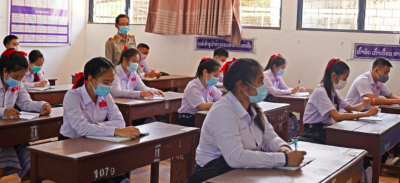COVID-19 and Girls’ Education in East Asia and Pacific

All Global Research articles can be read in 27 languages by activating the “Translate Website” drop down menu on the top banner of our home page (Desktop version).
***
Introduction
The COVID-19 pandemic has resulted in the unprecedented disruption of education globally threatening to reverse gains made in access to education and learning across countries. In the East Asia and Pacific region, the pandemic brought education provision in all of the 27 countries supported by UNICEF programmes to a standstill disrupting the lives and affecting the learning of over 325 million children at its peak in April 2020.
This unprecedented disruption to education systems has had particularly devastating impact on the situation of girls’ education, with many having limited access to distance learning during school closures, and with many at risk of not returning to classrooms once schools reopen. The pandemic also caused increases in gender-based violence, early marriage and teenage pregnancy, which in turn negatively affected girls’ ability to access education and learn.
This Brief summarizes the impact of COVID-19 on the education of girls in countries across the East Asia and Pacific region and proposes considerations for national stakeholders and policy makers in their school reopening efforts and beyond. The Brief also highlights and provides specific examples of UNICEF’s programmatic interventions to ensure that girls are not left behind in the efforts to reimagine more inclusive and equitable quality education systems after COVID-19.
COVID-19 may result in an unprecedented increase in girls out-of-school …
More than 15 million girls in the East Asia and Pacific (EAP) region were not enrolled and able to gain an education before COVID-19:1 Concerted efforts by governments across the region halved the overall number of girls out-of-school from 30 million to 15 million over the past two decades. These notable achievements towards girls’ access to education on a regional level hide significant variability at the country level. In Mongolia and the Philippines, for example, 73% and 63% respectively of primary school aged children out-of-school were girls before COVID-19.2
These trends are expected to be exacerbated by COVID-19. While recent research does not always agree on the exact extent of the negative impact of COVID-19 on school enrolment, all authors agree that the negative impact will be sizeable and lasting if not addressed.
Globally, 20 million additional secondary-aged girls could drop out of school due to COVID-19: Research by the Malala Fund based on dropout rates after the Ebola and financial crisis in 2014/15 and 2008 respectively estimates that 20 million additional girls globally could drop out of secondary schools alone.3 Following the Ebola crisis, girls in Sierra Leone were 16% less likely to be in school and girls in Guinea 25% less likely following school closures in these countries of between six to eight months – similar to the length of school closures in some countries in the East Asia and Pacific region. As the research focuses on secondary-aged girls only, the actual number of girls – primary to secondary aged – potentially not continuing their education on school reopening could be significantly higher.
In the East Asia and Pacific region, more than 1.2 million girls could drop out of school due to COVID-19:
Research conducted by UNESCO estimates that more than 1.2 million additional girls (from pre-primary to upper secondary)4 may drop out or not have access to school next year in countries of the East Asia and Pacific region due to the pandemic’s socio-economic impact including the need to generate income, increased household and child caring responsibilities, early and forced marriage and/or unintended pregnancy. Those who did not have access to distance education during government-imposed lockdowns are at particular risk of dropping out.
Click here to read the full report.
*
Note to readers: please click the share buttons above or below. Forward this article to your email lists. Crosspost on your blog site, internet forums. etc.
Featured image is from UNICEF Laos/2020/AKarki

